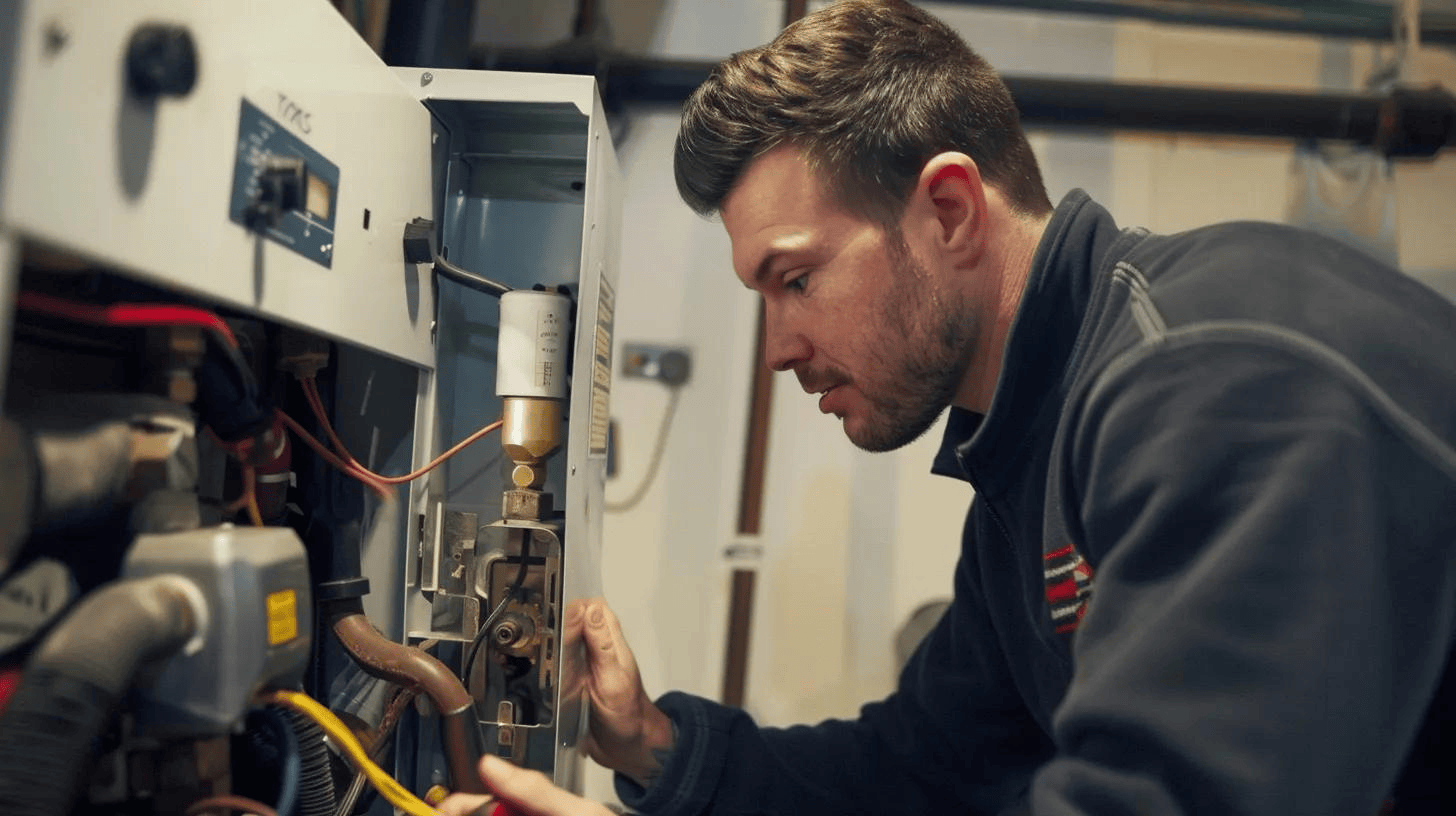Furnace Repair in Barnesville, MD
Expert Furnace Repair in Barnesville, MD
When your furnace malfunctions in Barnesville, MD, prompt professional repair is crucial. This page highlights common signs of furnace issues, including lack of heat, unusual noises, and frequent cycling. Discover the benefits of timely repairs, such as enhanced safety, improved energy efficiency, and extended system lifespan. Our comprehensive process involves thorough diagnosis, clear explanations, and precision repair work. We also help you decide between repairing your current system or considering a more efficient replacement.

Expert Furnace Repair Services in Barnesville, MD
When your furnace fails during a cold Maryland winter, it’s more than an inconvenience; it’s a disruption to your comfort and a potential risk to your home. For residents in Barnesville, a malfunctioning furnace requires a swift, professional response. Our dedicated furnace repair services are designed to address the specific heating needs of local homes, ensuring your system is restored to safe, efficient operation with precision and expertise. We understand the urgency of a broken furnace and provide comprehensive diagnostics and lasting repairs to bring warmth and peace of mind back to your household.
Common Signs Your Furnace Needs Professional Repair
A complete system breakdown is an obvious sign of trouble, but furnaces often display subtle warnings before they fail entirely. Recognizing these indicators can help you seek timely repairs, preventing more extensive damage and costly future breakdowns. If you notice any of the following issues, it's time for a professional inspection.
Lack of Heat or Insufficient Warm Air
The most apparent symptom is a furnace that runs but fails to produce heat or only circulates cool or lukewarm air. This can stem from several issues, ranging from simple pilot light or ignition sensor failures to more complex problems like fuel supply disruptions or a malfunctioning heat exchanger. Ignoring this can lead to a completely non-functional unit when you need it most.
Unusual and Persistent Noises
Your furnace should operate with a consistent, low hum. If you begin to hear new or loud noises, it’s a clear signal that a component is failing.
- Banging or Popping: This may indicate delayed ignition, where gas builds up before igniting. It can also be caused by contracting and expanding ductwork, but it should always be investigated.
- Squealing or Whining: High-pitched sounds often point to problems with the blower motor, a worn-out belt, or issues with the motor bearings.
- Grinding or Scraping: These severe mechanical sounds suggest a serious problem, such as a broken motor bearing, which requires immediate attention to prevent catastrophic failure.
Frequent or Irregular Cycling
A properly functioning furnace completes a full heating cycle to reach the thermostat's set temperature before shutting off. If your furnace turns on and off frequently in short bursts—a problem known as short cycling—it is not operating efficiently. This could be caused by a clogged filter restricting airflow, a malfunctioning thermostat, or an oversized unit for your home. Short cycling puts excessive wear on components and drives up energy costs.
Problems with the Pilot Light or Ignition System
For older gas furnaces, the pilot light should be a steady blue flame. If it is yellow, flickering, or frequently goes out, it could signal a problem with the thermocouple or a ventilation issue leading to incomplete combustion. Newer systems with electronic ignitions may fail to light the burners at all, pointing to a faulty ignitor or flame sensor.
Unpleasant Odors
A faint smell of burning dust is common when you first turn on your furnace for the season. However, persistent or unusual odors are a cause for concern.
- A strong burning smell could indicate an overheating motor or a wiring issue.
- The scent of rotten eggs is a serious warning sign of a potential natural gas leak that requires immediate action.
- Musty or dusty odors may suggest dirty ductwork or bacteria growth within the unit.
The Benefits of Timely and Professional Furnace Repair
Addressing furnace problems promptly does more than just restore heat. It provides significant long-term benefits for your system and your home.
- Enhanced Safety: A malfunctioning furnace can pose serious safety risks, including fire hazards from faulty electrical components or the release of carbon monoxide from a cracked heat exchanger. Professional repairs ensure these dangers are identified and eliminated.
- Improved Energy Efficiency: Even minor issues can force your furnace to work harder, consuming more energy and increasing your utility bills. A well-repaired system operates at peak efficiency, saving you money each month.
- Extended System Lifespan: Ignoring small problems puts cumulative stress on your entire HVAC system, leading to premature failure of major components. Timely repairs protect your investment and can help your furnace last for its full expected lifespan.
- Prevents Major Breakdowns: A small issue, like a worn belt, is an inexpensive fix. If left unaddressed, it can lead to a completely failed motor, resulting in a much more complex and costly repair.
Our Comprehensive Furnace Repair Process
We follow a meticulous, transparent process to ensure your furnace is repaired correctly and efficiently.
- Thorough System Diagnosis: Our process begins with a comprehensive diagnostic inspection. A skilled technician will carefully examine your entire furnace system, using specialized tools to accurately identify the root cause of the problem, not just the symptom.
- Clear Explanation and Recommendations: Once the issue is identified, the technician will explain the findings in clear, understandable terms. You will be informed about the necessary repairs, the parts required, and the steps involved in the solution.
- Precision Repair Work: With your approval, our technician will perform the repair using high-quality parts and industry-best practices. Whether it involves replacing a flame sensor, fixing a motor, or addressing an electrical fault, the work is done with precision and attention to detail.
- System Testing and Verification: After the repair is complete, we don’t just leave. The technician will cycle the furnace to ensure it is operating correctly, safely, and efficiently. We verify that heat is being distributed properly and that the system responds correctly to thermostat controls.
Deciding Between Furnace Repair and Replacement
In some cases, replacing an old, inefficient furnace may be a more cost-effective solution than another repair. Consider these factors when making your decision:
- Age of the Furnace: If your furnace is over 15-20 years old, it is approaching the end of its typical service life. Investing in a new, high-efficiency model may be wiser than spending money on an aging system.
- Frequency of Repairs: If you find yourself scheduling repairs every season, the cumulative cost can quickly add up. These frequent breakdowns are a strong indicator that the system is losing reliability.
- Cost of the Repair: A general rule of thumb is that if a repair costs 50% or more than the price of a new furnace, replacement is often the better financial choice.
- Rising Energy Bills: An old furnace loses its efficiency over time. If your heating bills have been steadily climbing despite consistent usage, a new, energy-efficient model will provide significant long-term savings.






.png)
